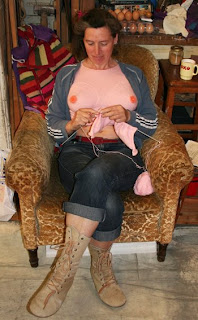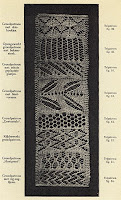To everything comes an end. After three month living amidst Knitted Worlds me and my colleagues started to tear off the exhibition last Sunday evening. Fragment of a building # 1 was the last work to be deconstructed and Désirée did it herself.
 We received many positive reactions on the exhibition from visitors (nearly 15.000 visitors during the exhibition) and press, but also critical comment. Art critics liked the focus on politics, feminism and identity in relation to knitting, but didn´t appreciate that much the variety of works.
We received many positive reactions on the exhibition from visitors (nearly 15.000 visitors during the exhibition) and press, but also critical comment. Art critics liked the focus on politics, feminism and identity in relation to knitting, but didn´t appreciate that much the variety of works.While researching I was especially triggered by the richness of issues expressed in works dealing with knitting. Of course, politics and female identity play a central role in quite some art works we presented and maybe these works are most overtly intriguing. However the more poetic, silent pieces, like the dresses of Nanna van Blaaderen to me contrasted in an interesting way with f.e. the subversive, more explicit works of Jimini Hignett, bringing up issues of feminism and politics.
 Visitors could make up their mind - for everybody who didn´t had the chance to see the exhibition hopefully the catalogue will be a ´substitute´. All works are wrapped up now, ready to be returned while others like the Sunflowers of Maria Roosen will dream in the depository of our museum until they will be woken up because somebody is longing for them……….
Visitors could make up their mind - for everybody who didn´t had the chance to see the exhibition hopefully the catalogue will be a ´substitute´. All works are wrapped up now, ready to be returned while others like the Sunflowers of Maria Roosen will dream in the depository of our museum until they will be woken up because somebody is longing for them……….I would like to thank all participating artists, lending parties, the designers Annemarie van den Berg en Cecilia Hendrikx for the design of the exhibition and catalogue, my colleagues, visitors of exhibition and website for being part of Knitted Worlds for some moment.






































